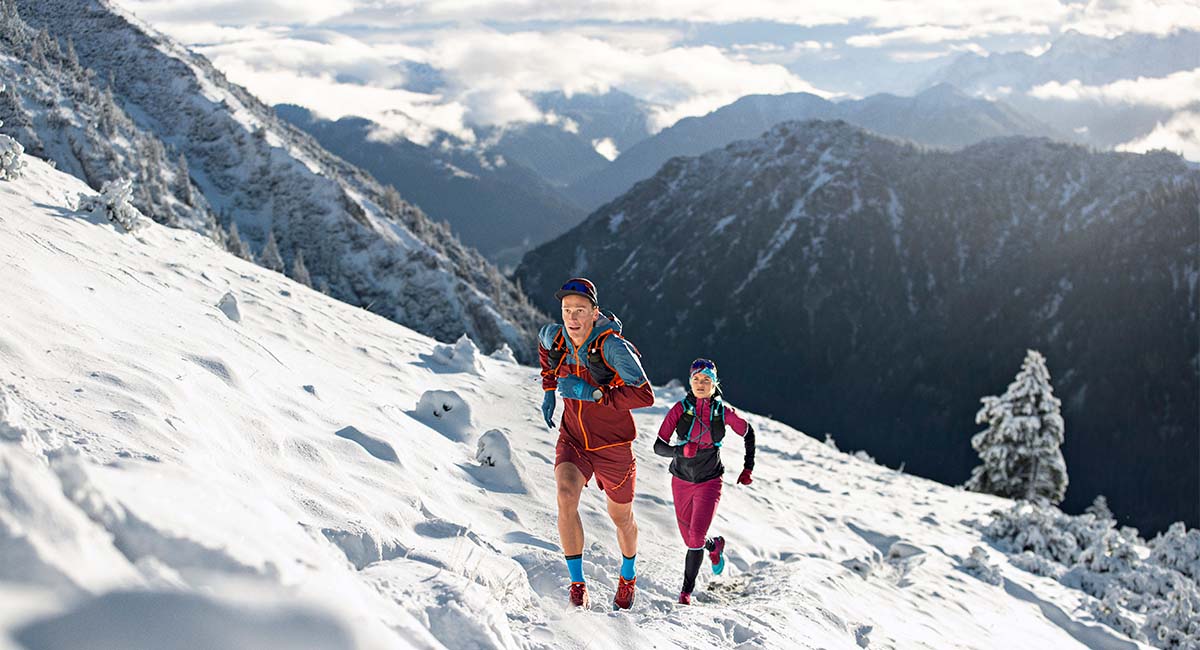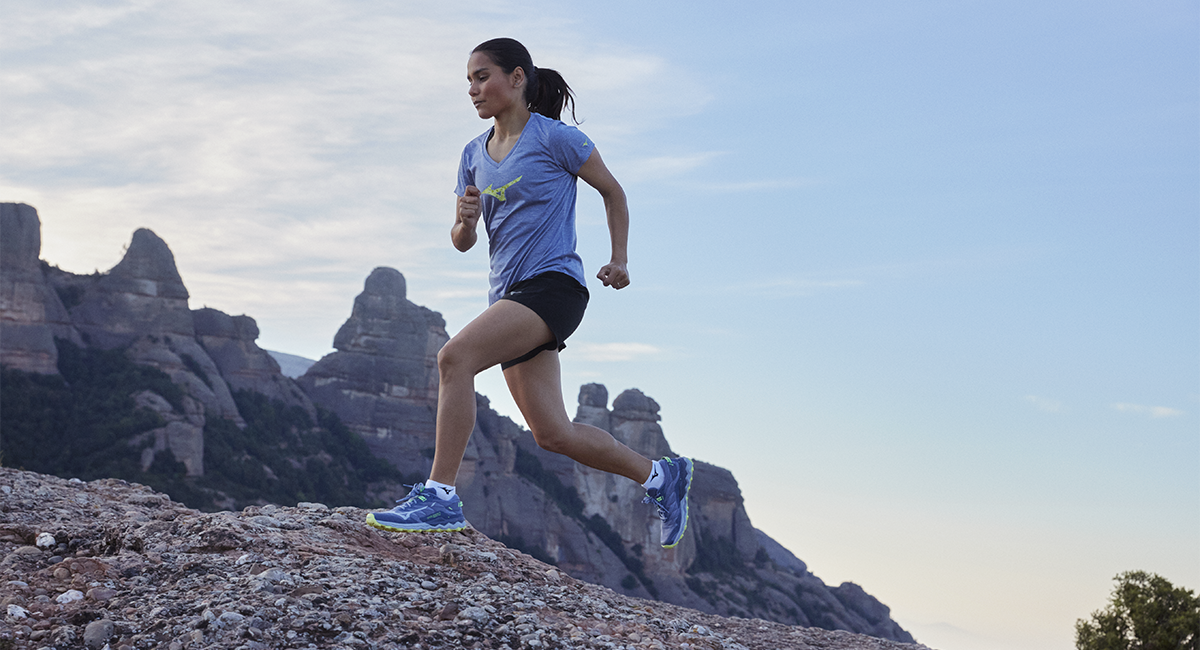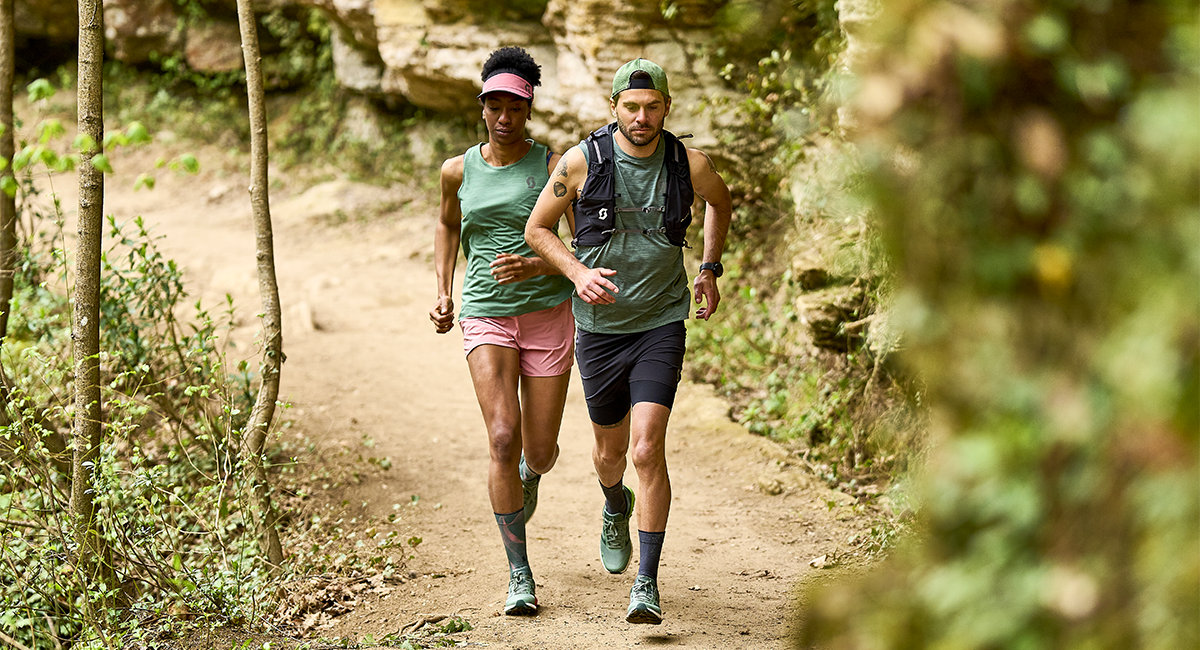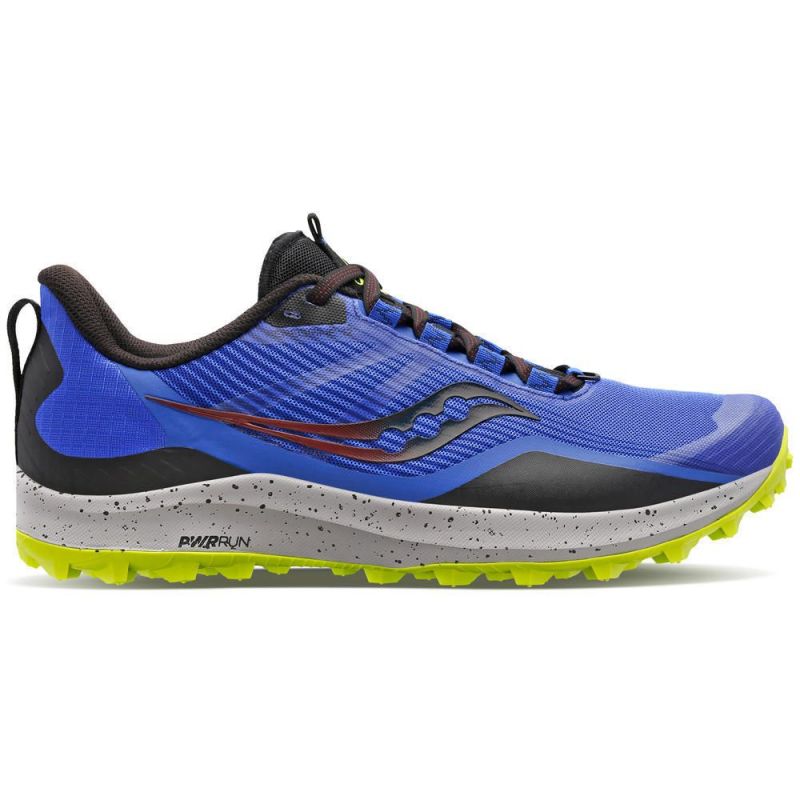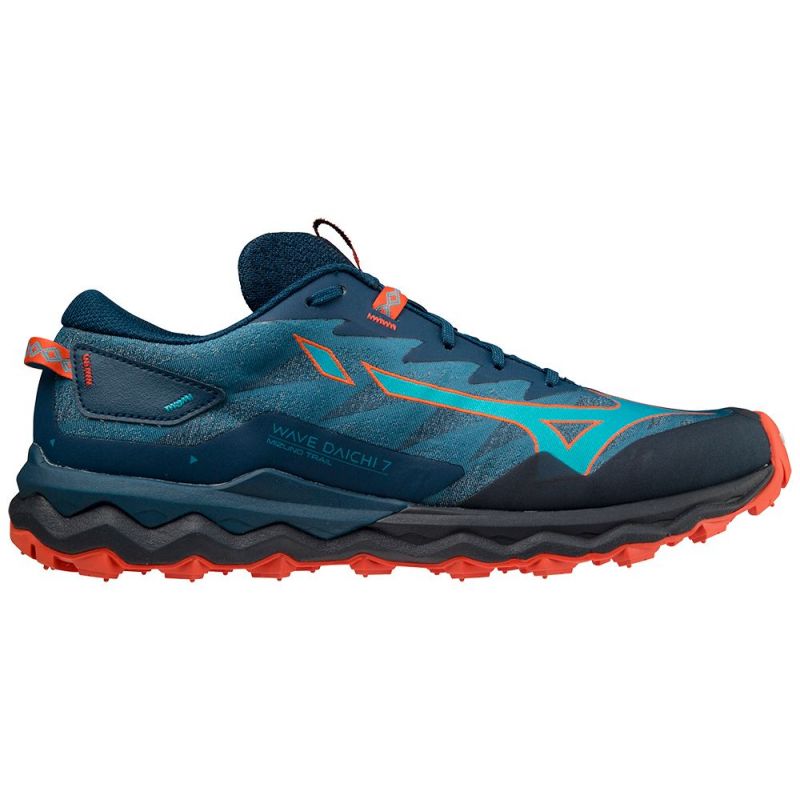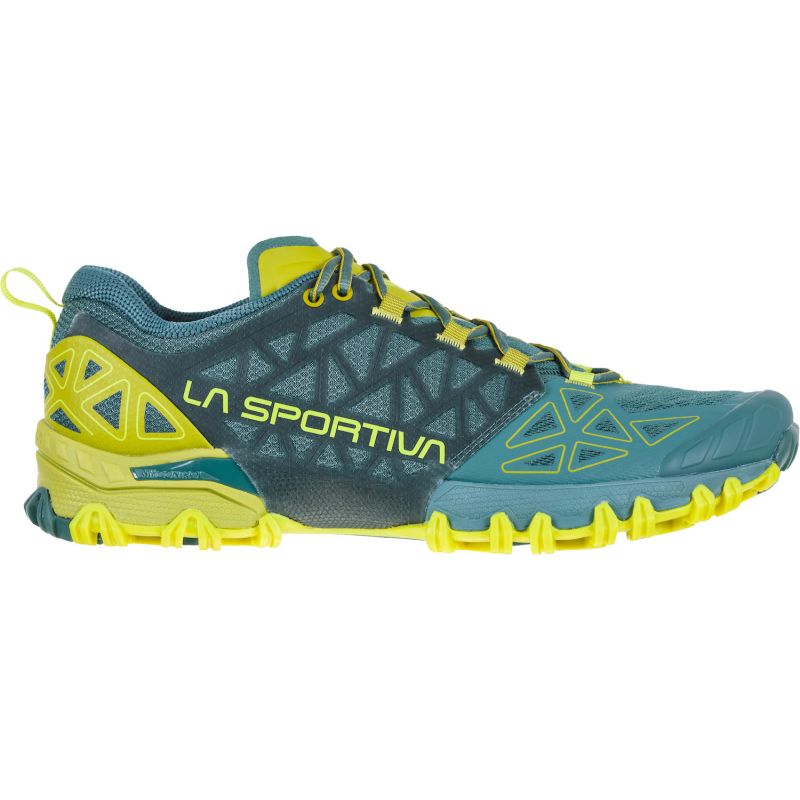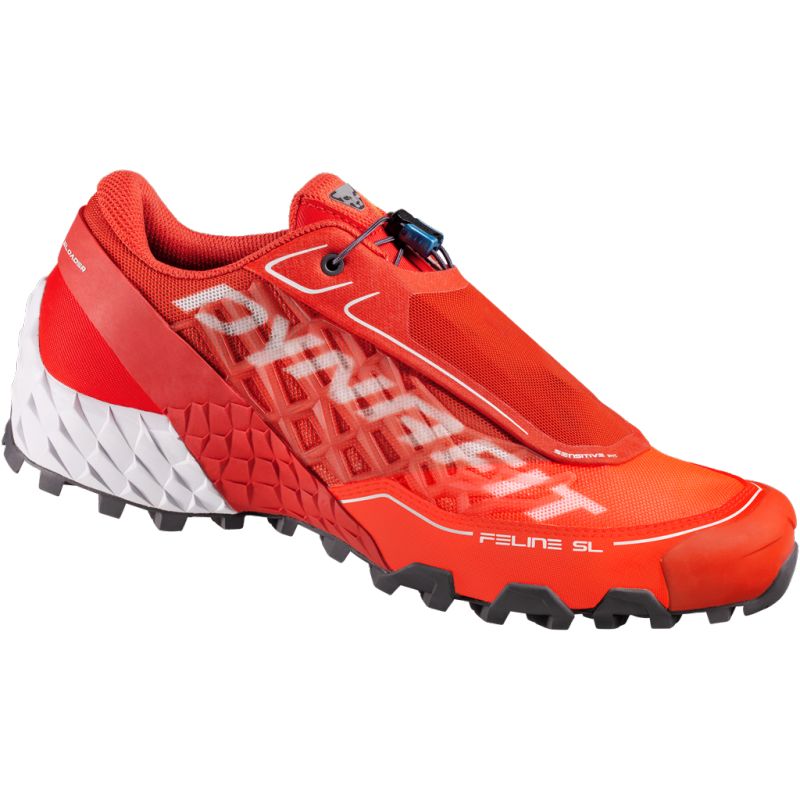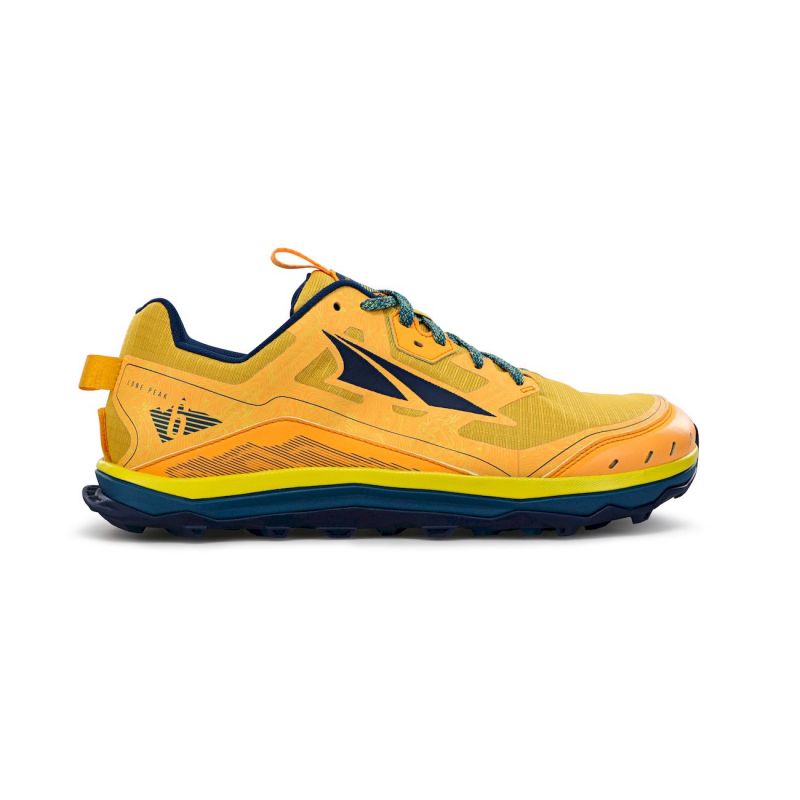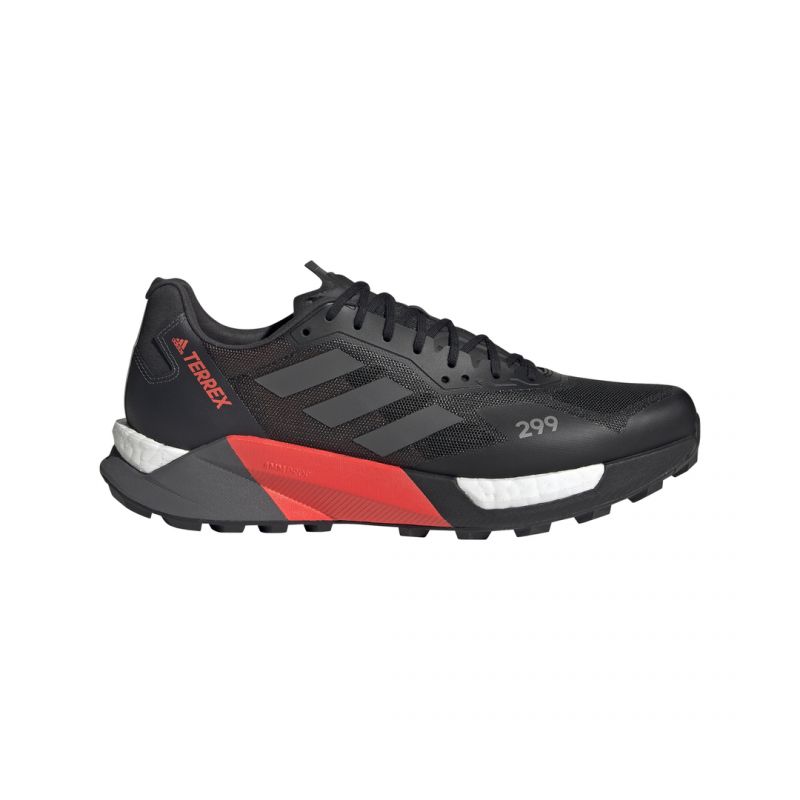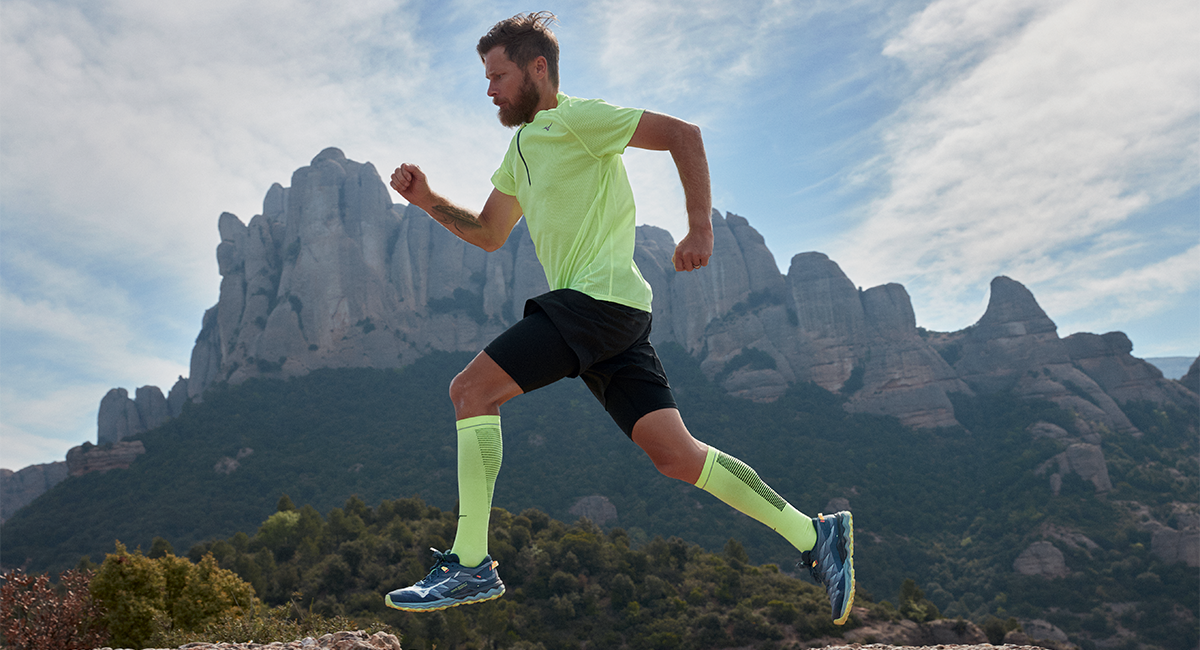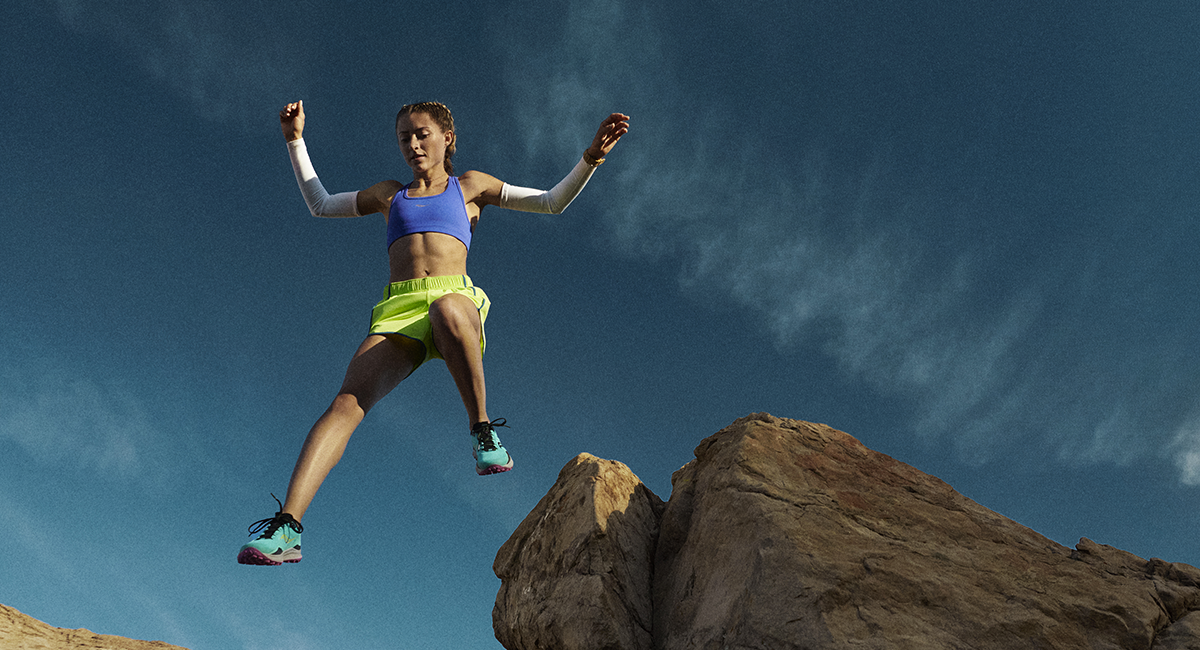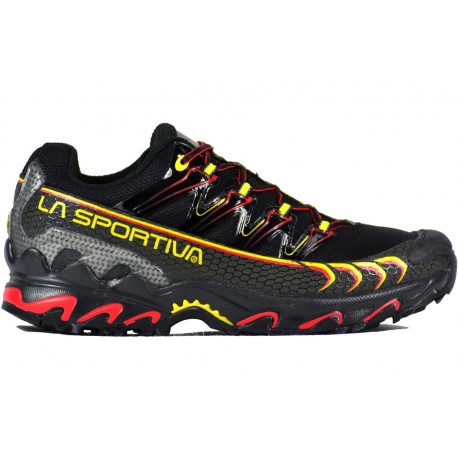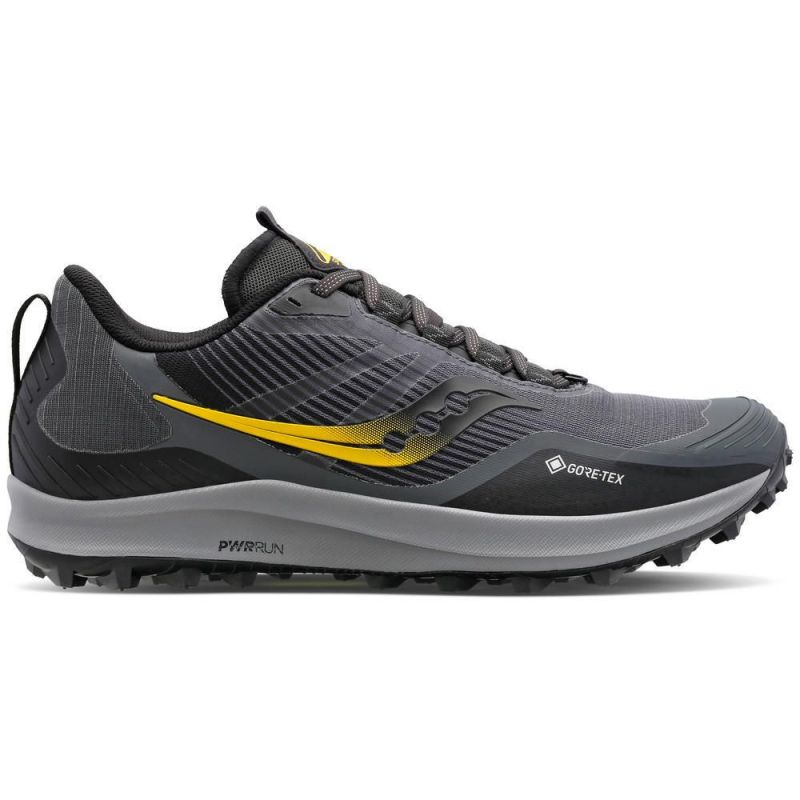To run in the best possible conditions and enjoy fully your trail running sessions, having the right equipment is a must! This starts by the choice of your trail shoes! To do a trail of few kilometers in the forest or an ultra-trail of multiple days in the mountains, your pairs of shoes will be consequently different! They therefore need to be chosen carefully, adapt to your foot shape and respond to all the needs that the ground or grounds that you meet requires.
Between the trail shoes with a perfect grip on wet grounds and the protective one offering the athlete a wide range of protections and the minimalist one, you don’t know which one to turn to? From the conception of the shoes to its care, as well as the selection criteria, here is all you need to know in order to shoes the right trail running shoe!
- Trail running shoe : anatomy and construction
- The different trail running shoes
- Choosing your trail running shoes
- Gore-Tex trail running shoes : For or against?
Trail running shoe : anatomy and construction
Trail shoes anatomy
Knowing the anatomy of a trail shoe is key for selecting the right one. As an introduction, we offer you to discover the different elements which constitute the shoe.
The mesh : the mesh of a shoe is a fabric more or less tightened over the shoe. If your mesh upper is ventilated, with high breathability, it will offer little protection against humidity and water infiltrations but will dry quickly.
A tight mesh will offer a better protection against water entries and a better support, but will take more time drying if water makes it through. Summer season trail lovers or competitors will prefer breathable mesh, when less experiences runners will prefer a tight mesh in order to keep their feet dry.
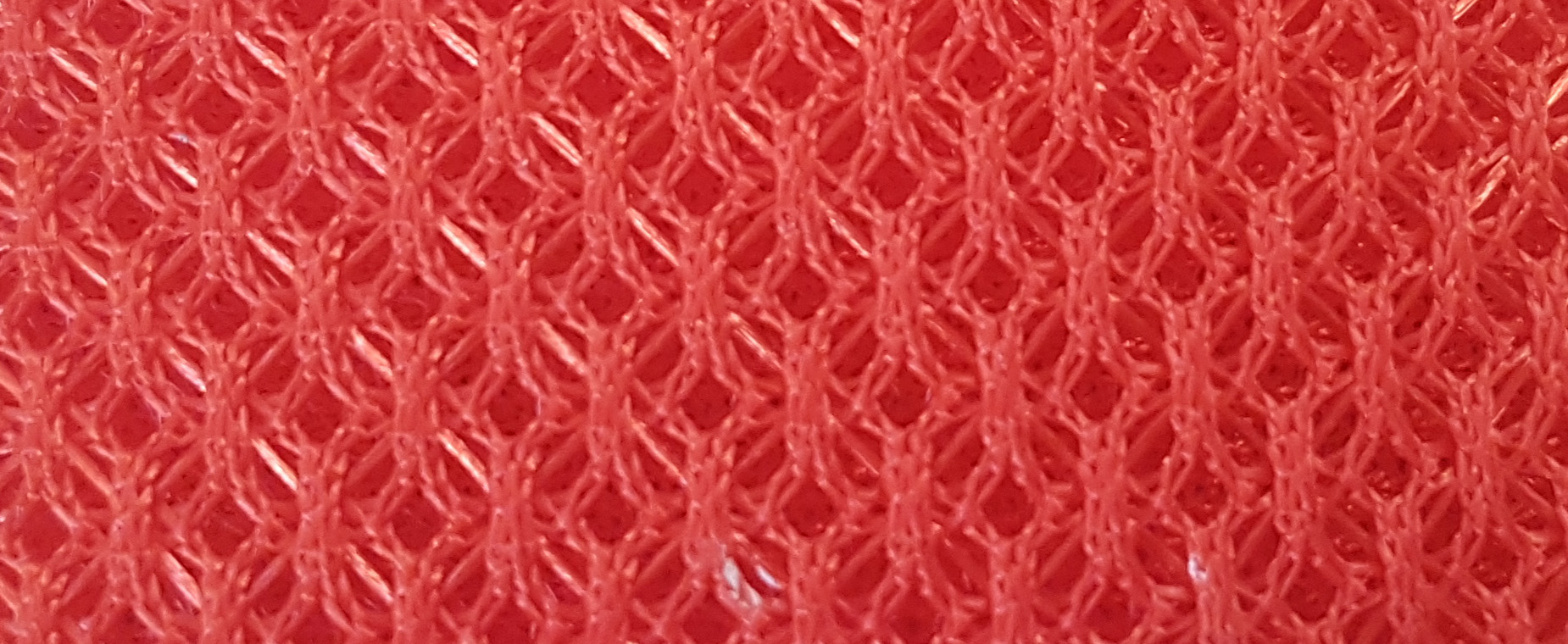 | 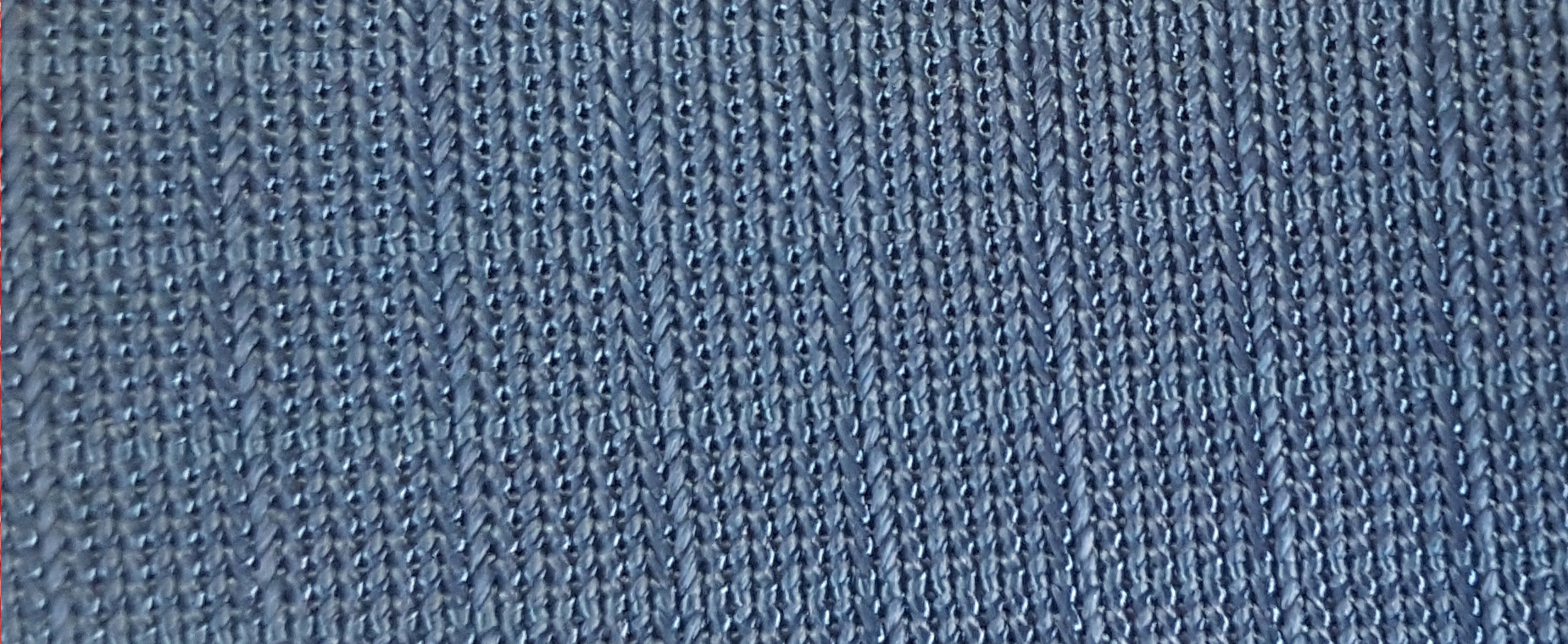 |
| Breathable mesh | Tight mesh |
If you like SwimRun, the activity coming from Sweden which consist, in teams of two, to alternate open water swimming and running, the question should not be asked: choose an ultra-breathable mesh to finish your race in the best conditions!
The mesh is one of the most fragile part of the trail running shoe. Many trailers complain of seeing holes in the mesh of their shoes after several consecutive days of racing. This problem appears also on excellent quality shoes. It is sometimes impossible to avoid all obstacles in a race.
A wrongly placed root combined with high speed is enough to break the mesh! If it happens, and you do not wish to change your shoes already, you can use repair glue. The glue Seam Grip 2 from Mc Nett are built to repair breaks of all types.
The advantages of a glue? Once the glue has dies, the fabric will stay soft to avoid other tears. Magic!
➤ Men's Trail Running Shoes - Shop
A trail shoe has 3 different soles. Firstly, the insole, is used for the comfort of your foot, freeing of humidity and sometimes bacteria treatment. Comes then the midsole. This sole is located between your insole and outsole. This sole is of great importance as it determines part of your stability and cushions during your activity.
The outsole, is of key importance for your trails.
The insole: in order to fight humidity and smells inside your shoe, nothing is better than an insole! The most famous insole is certainly the Ortholite® sole. This sole is composed of Ortholite® foam and EVA cushioning located at the rear foot. The Ortholite® foam assures the runner a good cushioning, cooling as well as a healthy climate within the shoe.
For runners with orthopaedic soles, those insoles should be removed and replaced with personalized soles build by your sport specialized orthopaedist.
The midsole: this sole can be built in different materials, but is generally composed in EVA, of different density or in polyurethane. EVA, as polyurethane is a plastic material, a resin that we obtain in the form of a foam, which enables to isolate the foot of the runner thanks to an inflating agent.
But what are those materials really for? Polyurethane, mixed with EVA, enables the sole to be lighter and therefore accelerate rest. The midsole, in EVA or EVA mix, of polyurethane and elastane, will always offer the best cushioning during your races.
In addition to the midsole, some trail shoes, are built with supplementary reinforcements designed to mitigate the impacts. Within the different technologies of impact absorption, the carbon platform “Carbon Shield” from Dynafit is between the outsole and insole. It enables the runner to have a supplementary support between the foot and the rocky ground.
The Mizuno Wave component is also a reference. It guaranties an excellent stability to the runner and therefore limit many injuries.
The outsole: this sole is adapted to the soft grounds that trail running use. It corresponds to the sole in direct contact with the ground. Some soles, built on trail running shoes designed for mountainous grounds, will be more efficient on difficult terrain.
A soft outsole will in general have a better grip as it will easily attach to humid or slippery grounds. On the contrary, a rigid sole will have less grip but more dynamism. Your outsole is therefore to be chosen depending the ground you prefer running on to or run the most on!
Between the most performant rubber outsole form famous trail running shoes, you can find :
- Vibram® sole : the Vibram® sole is identifiable by its yellow logo. Built from a mix of rubber which warranties the trail runner a great grip, even on icy or slippery grounds. They are also famous for their resistance in time.
- The Contagrip® sole: this sole, more or less soft, guaranties runner an unbeatable grip on dry grounds. On the contrary, if the ground is humid and slippery, this sole should be chosen with more important picks for optimal efficiency.
- Sole from Michelin®: inspired directly from the tires Michelin®, this sole offers great grip and has an extraordinary traction power.
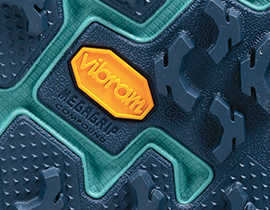 | 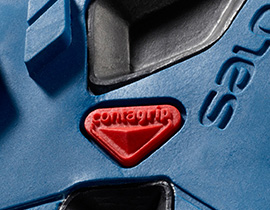 | 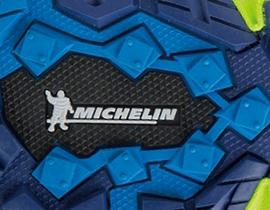 |
The studs: You will find on the market many outsoles, all different, and each will have a different grip. We generally say that a race on dry ground will not spiles as important as a technical and slippery ground, but in the facts, it is not that simple. For the studs, everything is a question of positioning, geometry and material and each brand offers different solutions! The Lone Peak of the Altra brand are for example built with multidirectional MaxTrac studs for an ideal grip.
As much studs positioning exist as there are ants on the planet…nearly. Up to you to find the one that fit you and your playground. You are hesitating? Feel free to contact our team of Hardloop experts who will guide you in your choice!
The drop: if you are an expert runner, little chance for you not to have heard about drop and minimalism. However, the drop stays an element of the running shoe too much undervalued. If you know about it or have never heard of it, here is what you need to know about the drop! The drop is the difference between the forward part and the rear part of your trail shoe: the heel to toe drop.
| Light drop Between 6 and 0 mm | Universal drop 8 mm | High drop 12 mm |
In the past few years, shoes with a light drop or a drop equal to zero are very popular. You which to know why? The explanation is simple:with a trail shoe with a higher drop, you will have a greater chance of having a heel stride, generating therefore more impact in all of your articulations. This is why, many runners are today searching for a running shoe with a lighter drop or no drop at all to favor what we call a“ natural stride”.
With a drop close to zero, your feet will come closer to a natural way of functioning. Expert runners, equipped with minimalist drop, will therefore start their stride with the forefoot or mid-foot. Regarding the zero drop, Altra is the reference. It’s in fact this brand which offered the public the first shoes with “flat” sole.Minimalist drop is not however recommended for all runners! If you are a beginner in the trail practice, a drop too close to zero will likely lead to injuries. If a light drop corresponds totally to expert runners, it is because they have developed, with time, a forward foot stride. If you strike, on the contrary, tackles with the heel and your shoes offers a very light cushioning, so you're more likely to injure yourself.
Some runners, moreover, continue to favor trail sneakers with a drop of 6 or 8 mm despite their many years of practice, for the sake of comfort or out of habit. Indeed, with fatigue the heel can be used again and a medium drop as well as heel cushioning allows you to accompany you serenely until the finish of your race.
Ultimately, if you are a beginner in trail running, we advise you to choose a shoe with a universal drop of around 8 mm. For regular runners, a lower drop, between 6 and 0 mm, should suit their stride. People with a strong size will choose a drop of 10 mm, to better absorb shocks.
The laces: In order to adjust the trail shoes to your size and benefit from good support, the lacing is not to be forgotten! You will generally find two types of lacing: classic laces, simple or with a zip to protect you from the snow, as well as Quicklace type fast lacing.
The latter allows you to perfectly adjust the tightness of your trail shoe and lock it. Most often, a pocket allows you to store the slider (the button that allows the tightening) so that it does not get caught in tree branches!
➤ Women's Trail running Shoes - Shop
Minimalist or Maximalist Design
Now that you know all the elements of a trail shoe, you can determine if your trail running and habits will make you choose a trail shoe with a minimalist design, or, conversely, maximalist.
Minimalist shoe | Maximalist shoe |
Drop of 0 mm or low | Drop Universal or higher |
Little cushioning | Optimal cushioning (EVA…) |
Light upper | Reinforced upper |
No reinforcements or protection | Protection systems (stone guard…) |
Very little support | Chassis rigid |
Low weight | High weight |
Neither of these two designs suits you completely? Don't panic, the majority of trail shoes fall between these two designs and have less extreme criteria.
To make your choice even more precise, it is possible to group these different criteria according to your practice of trail running. Whether you are a fan of trail running on dry roads, trail running on slippery ground or trail running in the mountains, you will find a suitable pair of trail shoes!
The different types of trail shoes
The trail shoes that you will find on the market are generally classified into 3 categories: light shoes for non-technical trails, trail shoes dedicated to technical trails, which will be more robust and shoes for very rough terrain and off-road, which will be very robust and protective. We invite you to discover all their specificities and to determine which category best suits your practice of trail running.
➤ Altra Trail Running Shoes - Shop
Trail shoes for trails
Trail shoes dedicated only to relatively uniform paths and trails are shoes that offer little lateral and frontal protection, and therefore, which are lighter than other shoes. If you practice trail running on hills, in the forest or on well-designed tracks in the middle of summer, this type of trail-running shoe is ideal.
- Lightweight design
- Low impact protection and reinforcement exterior elements
- Good dynamism
- Low rigidity
- Outsole that includes small studs
- Midsole that varies according to the model, sometimes shock-absorbing, sometimes offering minimal cushioning so that the runner feels closer to the ground
Trail shoes for slippery and technical terrain
The trail running shoes designed for running on slippery and technical trails such as hiking trails must be able to adapt to a wide range of terrains.
Features of trail shoes for slippery and technical terrain:
- Protective reinforcements such as -stones, ideal for absorbing vibrations during descents
- Adherent lugs that allow the runner to slow down during his run and negotiate turns without slipping
- Space between the lugs that allows dirt and dried mud to fall to the during the race
- Rigid construction, allowing the foot support
- Lacing which promotes good foot support
Trail shoes for mountain outings
If you are an adventurer at heart and you like to tread on the most uneven terrain, you will have to opt for extremely robust and protective trail shoes. These shoes incorporate most of the features present on trail shoes for running on slippery and technical terrain, with a few additional improvements (options).
Features for trail shoes for mountain outings:
- Adherent crampons that allow the runner to slow down during his run and negotiate turns without slipping
- Very rigid construction, preventing twisting of the foot and ankle
- Lacing that promotes good foot support
- Waterproof membrane
- Very resistant materials (polyurethane is often used to replace the EVA foam)
- Significant weight
In order to have an overview of the different characteristics of trail shoes, here is a summary table:
Characteristics | Trail shoes for paths | Trail shoes for technical and slippery ground | Trail shoes for mountain terrain and off-road |
Protection against the external elements | Light | Important | Important |
Structure | Light | Robust | Very robust |
Midsole | Minimal or relatively cushioning | Very cushioning | Very cushioning |
Studs | Small studs | Large and spaced | Large |
Lacing system | Classic | Favoring good foot support | Favoring good foot support |
➤ Saucony Trail Running Shoes - Shop
How to choose your trail shoe: criteria of selection
Now that you know all the elements of a trail running shoe, all you have to do is know the selection criteria that will allow you to find the right pair. Between comfort, breathability, protection and grip, discover all the criteria to define the shoe that will guide your steps on the most beautiful trails in the world, and perhaps to victory.
Choose your trail shoe according to the shape of your foot
Fit: We often hear about the “fit” of a trail shoe. This fit comes from the shape, flexibility, comfort and support offered by the liner of a shoe. You will find, on the market today, tighter fits, ideal for runners with narrow feet, as well as wider fits, suitable for wider feet.
Your first feeling, when trying on your trail shoe, is essential. If you don't feel well when your foot is at rest, chances are you won't feel better during your run! Indeed, the foot swells during the effort.
To know if the fit and the liner of the trail shoe suit your foot, feeling a certain comfort is important. You also need to be able to move your toes freely, at rest, so that you have some room when your feet swell.
We recommend, for this, to choose a half size or a size above your usual size for the trail, and up to a size and a half above your usual size for the ultra-trail.
Size: How to choose the right size among different brands of trail shoes? Many athletes ask themselves this question. To give you an example, if your foot is 26 cm long, you will wear 41 at Saucony but 40.5 at Salewa or Dynafit.
If you have any doubts, we suggest you refer to the size guide on Hardloop.fr or contact our advisers! They will guide you with pleasure.
For athletes with a wide foot, some brands will again be more comfortable than others. They may feel better in Altra shoes, while runners with thin to normal feet will be more comfortable in La Sportiva or Scarpa trail shoes, which have a tighter fit. Do not hesitate to try several brands to determine which one best suits your morphology, and remember, it is better to choose a little too big than a little too small for the trail!
Toe-box or toe box: Does the name “toe-box” seem totally unknown to you?
Yet you most certainly see what it is. The Toe-box, within a trail shoe, is the space entirely reserved for your toes. You will notice that a shoe that has a tight fit will compress your toes more than a trail shoe with a wide fit, since with a tight fit, the Toe-Box will be narrower.
Thus, in order not to interfere with your running and to make the most of the qualities of your toes, which play a very important role in your stability and your ability to propel, many brands now offer wide and flexible Toe-Boxes. Again, it all depends on your body type and your preferences regarding trail shoe brands!
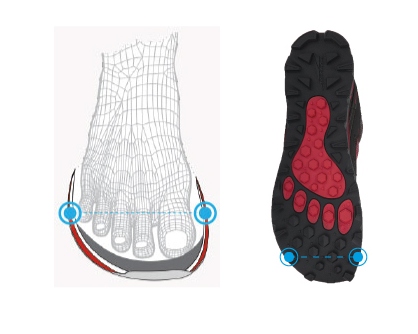 | The toe-box is a system created by the brand Altra, which allows your toes to be able to be placed and to have enough space to propel you with each stride. |
➤ Dynafit Trail Running Shoes -Shop
Choose your trail shoe according to the terrain
Gaiters: A system of gaiters can be integrated into your trail shoes. Gaiters prevent external elements, such as sand, snow, small branches or even mud from getting into your shoes.
These external elements can indeed bother you during your run and cause irritation due to repetitive friction. The gaiter integrated into the trail shoe therefore guarantees your protection.
La Sportiva's Crossover 2.0 GTX shoe has integrated gaiters to fly over all rough terrain in the high mountains. Equipped with FriXion® Blue soles for unparalleled grip and grip, this La Sportiva trail shoe offers an excellent compromise between dynamism, protection and natural movement.
Stone guard: For runners who only practice trail running on rough, rocky trail or technical mountain paths, the stone guard is mandatory protection. Typically located on the front and sides of trail shoes, rock guards are intended to protect your feet in the event of contact with rocks and stones. Attached to the trail shoe, these rubber-derived pieces will come to the rescue of your toes.
These protective reinforcements are therefore not to be neglected if you like to practice trail running on very uneven ground and especially in the mountains.
Choose your trail shoe according to your stride
It is possible to hear that a trail shoe is chosen according to your stride. There are indeed 3 types of strides: pronator, supinator and universal.
Supinator | Universal | Pronator |
If you're a pronator, your natural motion is for your outer heel to hit the ground first, before the front of your foot rocks inward. Supinators, on the other hand, will attack their stride with the inner heel before switching to the outside of the foot.
There are trail shoes that offer correction for pronators and supinators, but this correction is very weak. It is indeed not very useful during a technical trail, where you will have to run on sloping or uneven loose terrain which permanently unbalances your stride. Each stride is therefore different and, unlike road running, correcting it is therefore often not necessary. Nevertheless, if your stride really handicaps you, we advise you to go to a podiatrist so that he can make suitable insoles for you.
Choose your trail shoe according to your weight/size
As we have seen for the choice of drop, the runner's weight and size play an important role in selecting the ideal trail shoe. A person who has a strong size will indeed seek significant support and cushioning, while a lighter person will seek, as a priority, good dynamism.
“Heavy” runners (+85 kg for men and more than 70 kg for women) will therefore opt for a pair that offers optimal foot and ankle support, great stability, a significant drop, as well as a midsole with a high foam density. Why ? Because a high-density EVA foam sole will resist multiple shocks better over time.
If your midsole is a low-density foam, it will pack very quickly and therefore lose its cushioning quickly.
Although it is recommended to consider the midsoles, all trail shoes can be suitable for a strong person! Conventional trail shoes are simply likely to wear out more quickly than those of a person of average weight.
➤ Mizuno Trail Running Shoes - Shop
Gore-Tex trail shoes: for or against?
The Gore-Tex membrane is an extremely thin layer of polytetrafluoroethylene, a material that contains more than 1.4 billion pores per cm². These numerous pores ensure that the Gore-Tex fabric is waterproof over time. They are indeed too small to let water in, but large enough for the steam linked to the heat of your feet to escape.
During a trail, Gore-Tex can have many advantages, since a wet fabric evacuates heat 3 times faster than a fabric that has remained dry throughout the effort. With a Gore-Tex trail shoe, you can therefore face the most severe weather while staying warm and dry. Your feet, protected from humidity, will thus be able to avoid the formation of any blisters.
A Gore-Tex shoe can therefore be an asset during a mid-mountain trail run, when the conditions are not very mild and the temperatures are cool.
Despite this, the Gore-Tex trail shoe is not to be taken everywhere. If the latter prevents the water from entering, it also prevents it from leaving. If you are used to running in the woods crossing streams, the use of Gore-Tex is therefore not recommended. We advise you to choose a trail shoe with a breathable mesh, which will dry quickly, and will not trap water.
Similarly, if your next trail run takes place in the summer and the temperatures are rising, you might regret choosing a pair of Gore-Tex, which is less breathable and more difficult to wick away perspiration. The choice of a Gore-Tex trail shoe or not therefore depends solely on your sports practice. It's up to you to decide if it suits you!
You now know everything there is to know about trail shoes and can choose your pair with peace of mind. Discover new racing sensations and discover new horizons! If you have any questions about trail running shoes, please let us know. Our HardGuides will answer all your questions by phone +33 (0) 1 84 67 14 24 (free call) or via our Help Center.
➤ Trail Running Shoes - Shop
Crédits photos : ©Dynafit - ©Saucony - ©Mizuno - ©Scott
